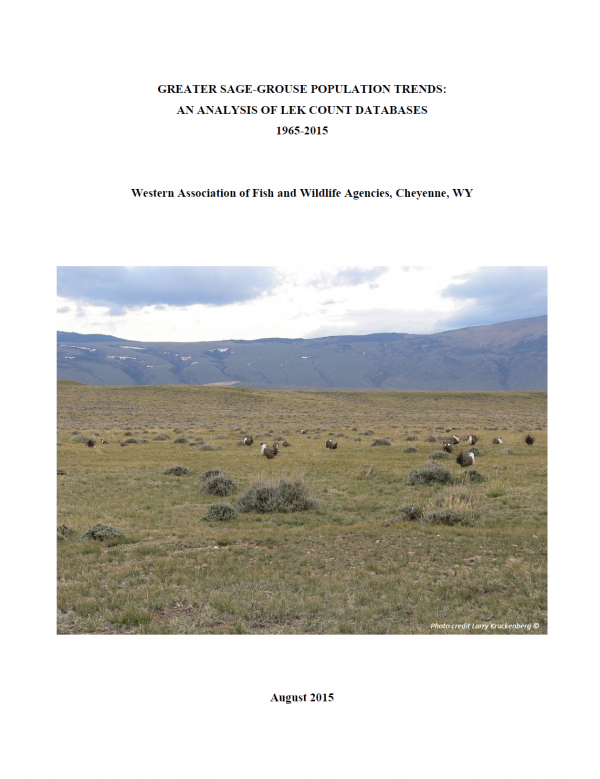Counts of males attending leks in the spring have been the primary means employed by states to monitor status of greater sage-grouse (Centrocercus urophansianus) populations for over 75 years. Despite limitations and potential biases, lek count data remain the only long-term, range-wide dataset available for evaluating trends in sage-grouse populations. Using lek data provided by each state, we calculated the number of active leks, the average number of males per active lek each year, and modeled trends in male counts using a set of mixed-effects, Bayesian hierarchical models at range-wide, management zone, and state spatial scales for the 1965-2015 period. Trends within high population density core areas were compared to peripheral areas at range-wide and management zone scales...
Attached Files
| File | Action |
|---|---|
| Lek Trend Analysis final 8-14-15.pdf | Download |
- Version
- File Type pdf
- File Size 1.57 MB
- Publication Date August 1, 2015
- Download Count (since 10/2020) [1425]
